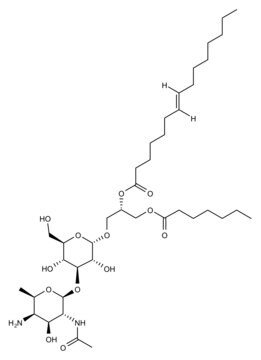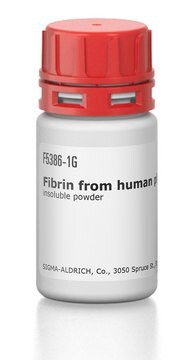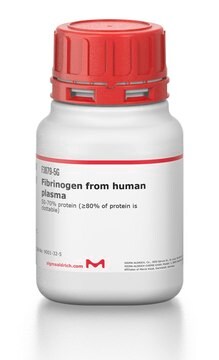V0132
Rat Vitronectin
from rat plasma, powder, suitable for cell culture
Synonyme(s) :
Serum spreading factor
About This Item
Produits recommandés
product name
Vitronectin from rat plasma, lyophilized powder, BioReagent, suitable for cell culture
Source biologique
rat plasma
Niveau de qualité
Gamme de produits
BioReagent
Forme
lyophilized powder
Poids mol.
75 kDa
Conditionnement
pkg of 50 μg
Technique(s)
cell culture | mammalian: suitable
Couverture de surface
0.1 μg/cm2
Solubilité
water: soluble 1.00 mL, clear, colorless
Numéro d'accès UniProt
Conditions d'expédition
dry ice
Température de stockage
2-8°C
Informations sur le gène
rat ... Vtn(29169)
Description générale
Application
Actions biochimiques/physiologiques
Composants
Attention
Notes préparatoires
Code de la classe de stockage
11 - Combustible Solids
Classe de danger pour l'eau (WGK)
WGK 3
Point d'éclair (°F)
Not applicable
Point d'éclair (°C)
Not applicable
Équipement de protection individuelle
Eyeshields, Gloves, type N95 (US)
Certificats d'analyse (COA)
Recherchez un Certificats d'analyse (COA) en saisissant le numéro de lot du produit. Les numéros de lot figurent sur l'étiquette du produit après les mots "Lot" ou "Batch".
Déjà en possession de ce produit ?
Retrouvez la documentation relative aux produits que vous avez récemment achetés dans la Bibliothèque de documents.
Articles
3D cell culture overview. Learn about 2D vs 3D cell culture, advantages of 3D cell culture, and techniques available to develop 3D cell models
Cancer stem cell media, spheroid plates and cancer stem cell markers to culture and characterize CSC populations.
Extracellular matrix proteins such as laminin, collagen, and fibronectin can be used as cell attachment substrates in cell culture.
Notre équipe de scientifiques dispose d'une expérience dans tous les secteurs de la recherche, notamment en sciences de la vie, science des matériaux, synthèse chimique, chromatographie, analyse et dans de nombreux autres domaines..
Contacter notre Service technique




